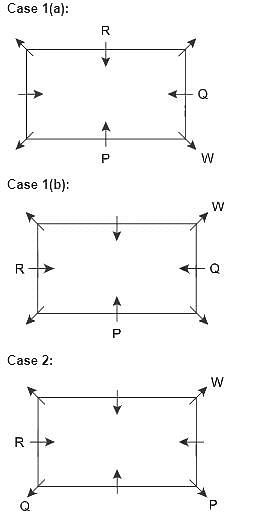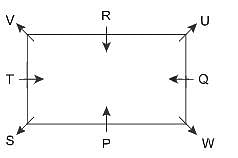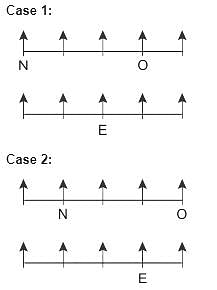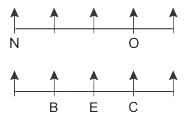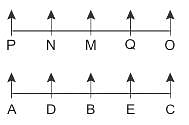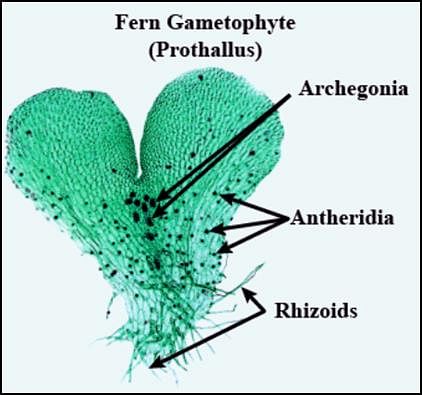DSE Odisha TGT Science CBZ Mock Test - 2 - OTET MCQ
30 Questions MCQ Test DSE Odisha TGT Mock Test Series 2024 - DSE Odisha TGT Science CBZ Mock Test - 2
Which path is NOT mentioned in the Bhagavad Gita as a way to attain salvation?
The "Soccer City" stadium, the venue for the 2010 FIFA World Cup final, is located in which city?
| 1 Crore+ students have signed up on EduRev. Have you? Download the App |
Where is the oldest sugar factory located in the state?
Direction: If a Paper (Transparent Sheet) is folded in a manner and a design or pattern is drawn. When unfolded this paper appears as given below in the answer figure. Choose the correct answer figure given below.
If the following pattern is drawn in a transparent square sheet and folded along the dotted lines, how does it appear?
Question Figure

Answer figure

Direction: Study the following information and answer the given questions carefully.
There are 8 persons, P, Q, R, S, T, U, V and W sitting around a rectangular table in such a way that four of them sit at four corners of the table while four sit in the middle of each of four sides. Persons who sit at the corners face outside the centre while those who sit in the middle of the side face inside.
Q sits second to the right of P. R sits third to the left of W. R faces inside. T sits third to the left of U. V sits second to the left of U. R is not an immediate neighbor of P.
Q. Who among the following faces Q?
How many '8' are followed by even number and preceded by an odd number?
184381483287848568784186
Direction: Study the following information and answer the given questions carefully.
Ten people are sitting in two parallel rows such that people sitting in row 2 are just behind people in row 1. In row 1 - M, N, O, P and Q are sitting and all are facing north. In row 2 - A, B, C, D and E are sitting and all are facing north.
One who sits just behind O is to the immediate right of E. O sits 3rd to the right of N. B is neither at any of the extreme ends nor sits exactly behind O. P sits on a seat which is exactly ahead of A. D doesn’t sit at any of the extreme ends. M is not exactly ahead of E. Number of people sitting between C and E, is the same as the number of people sitting between E and B.
Q. If P exchanges its position with O, then who sits exactly behind of O?
The positions of how many digits in the number 837912 will remain unchanged after the digits within the number are rearranged in descending order (from left to right)?
Which is the place where the child's 'cognitive' development is defined in the best way?
In a learner-centered classroom, the teacher would:
A. Encourage students to reflect on what they are learning and how they are learning it.
B. Demonstrate what she expects her students to do and then give them guidelines to do the same.
C. Employ such methods in which the learners are encouraged to take initiative for their own learning.
D. Use lecture method to explain key facts and then assess the learners for their attentiveness.
Answer the following question by selecting the most appropriate option.
An inclusive school:
All India Council of Elementary Education was established under article
Consider yourself as an English teacher. You find that certain students in your class are poor in English language and commit mistakes in language comprehensive-type questions. What will you do improve the performance of the students in language comprehension?
A freshly prepared aqueous solution of Pd(NH3)2CI2 does not conduct electricity, it suggests that
Only One Option Correct Type
This section contains multiple choice questions. Each question has four choices (a), (b), (c) and (d), out of which ONLY ONE is correct.
Q.
Cl2 gas is passed into a solution containing KF, Kl and KBr, and CHCI3 is added. There is a colour in CHCI3 (lower) layer. It is due to
During the dark reactions of photosynthesis :–
Which of the following is not a component of a chloroplast?
Which is false regarding chlorophyll a and b?
The law of limiting factor for photosynthesis was given by :–
Statement I: Age pyramid of expanding population is broader at base and thin upwards.
Statement II: Number of individuals in pre-reproductive age is more than post reproductive age.
Statement III: population size is technically called as population density.
What was Aristotle's contribution to the classification of living organisms?
Study the given figure showing structure of Euglena, and select the option that correctly identifies A, B, C and D.
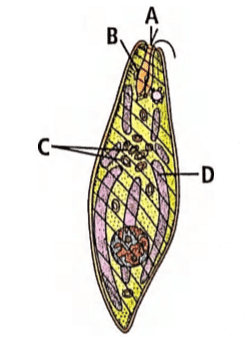

Given below are four statements (i)-(iv) regarding embryonic development in humans.
(i) Cleavage divisions bring about considerable increase in the mass of protoplasm.
(ii) With more cleavage divisions, the resultant blastomeres become smaller and smaller.
(iii) The blastomeres in the blastocyst are arranged into two layers, trophoblast and endometrium.
(iv) Cleavage divisions result in a solid ball of cells called morula.
Which of the above two statements are correct?




